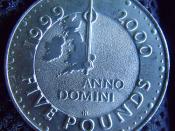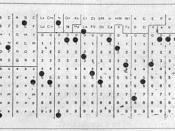1) Introduction
A computer is a tool and partner in every sphere of human life and activity. Computers are bringing many changes in industry, government, education, medicine, scientific research, law, social service and even arts like music, movies and paintings. The areas of application of computers are confined only by the limitation on creativity and imagination.
1.1) Definition
A computer is an electronic machine, capable of performing basic operations like addition, subtraction, multiplication, division etc. The computer is also capable of storing information, which can be used later. It can process millions of instructions in a few seconds and at the same time with high accuracy. Hence a computer can be defined as an automatic electronic machine for performing calculations or controlling operations that are expressible in numerical or logical terms.
2) History
2.1) 2500 BC - The Abacus
Abacus is the first known calculating machine used for counting. It is made of beads strung on cords and is used for simple arithmetic calculations.
The cords correspond to positions of decimal digits. The beads represent digits. Numbers are represented by beads close to the crossbar. Abacus was mainly used for addition and subtraction and later for division and multiplication.
2.2) 1614 AD - Napier's Bones
The Napier's Bones was invented by John Napier, a Scottish mathematician as an aid to multiplication. A set of bones consisted of nine rods, one for each digit 1 through 9 and a constant rod for the digit '0'. A rod is similar to one column of a multiplication table.
2.3) 1633 AD - The Slide Rule
The slide rule was invented by William Oughtred. It is based on the principle that actual distance from the starting point of the rule is directly proportional to the logarithm of the numbers printed on the rule. The...


